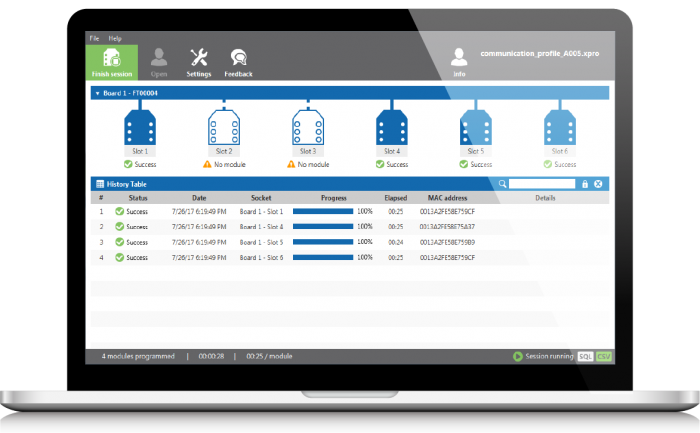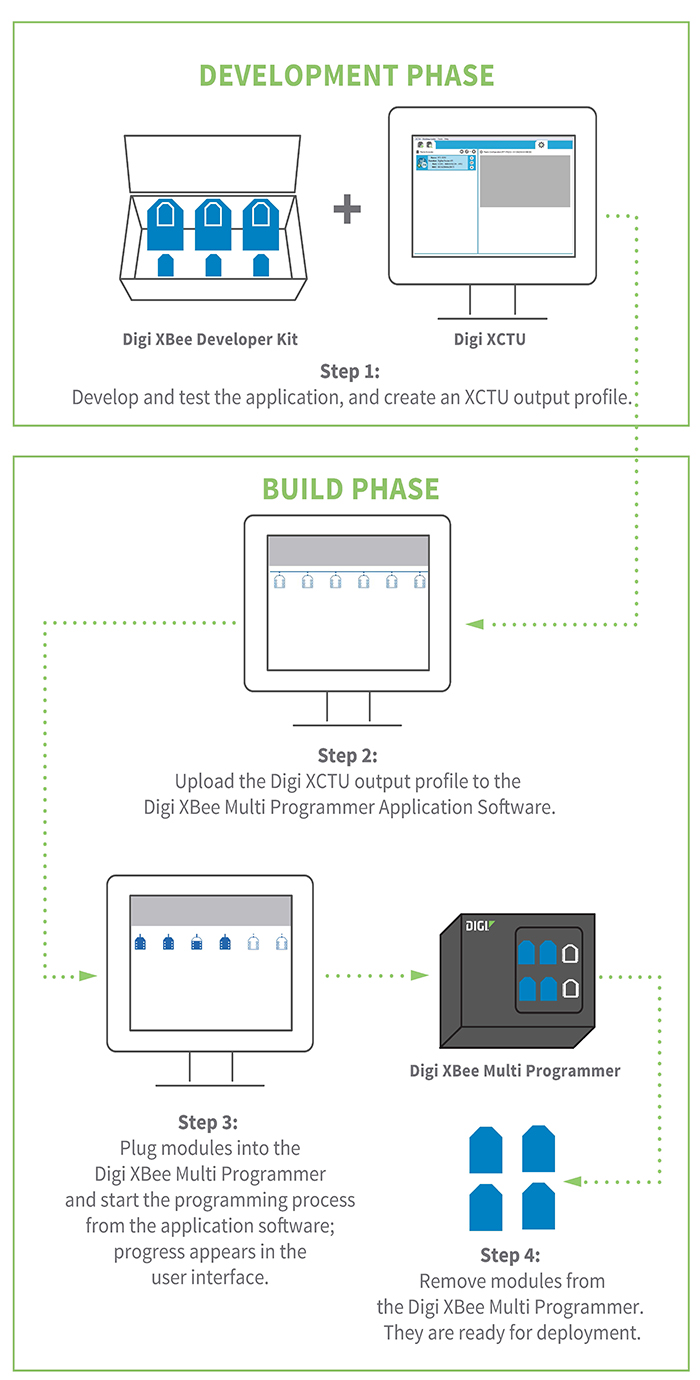Programming Digi XBee® modules for deployment is not a complicated task. However, it does require each module to be programmed with the correct firmware, configuration parameters and any other code needed for the module to perform as needed in the deployed application.
Traditionally, programming RF modules is a one-at-a-time process. While this is not a problem for small deployments, programming hundreds or thousands of modules can be very time consuming. And today we are seeing some enormous IoT deployments, as well as industrial deployments in the Industrial Internet of Things, or IIoT. These applications often require thousands of modules to be deployed in oil fields, metering applications, renewable energy applications and more.
For rapid time-to-market, the RF modules to be deployed to large applications such as these must be configured quickly in the production phase of the product lifecycle.

Programming Multiple Digi XBee Modules
Today, we are proud to announce the release of the Digi XBee Multi Programmer, which is designed to expedite the programming process. The tool makes it possible to program 6 devices at one time from a profile pre-configured in Digi XCTU®. The profile is then seamlessly integrated into the Multi Programmer Application Software which then programs each device with ease, allowing for the technician to program multiple modules in little time at all.
But it gets even better. The programming process can be accelerated by connecting multiple programmer tools to the same PC, further expediting the build process.
Functionality Overview
Heres a quick overview of the Digi XBee Multi Programmer:
- Programs up to six Digi XBee modules simultaneously
- Multiple Digi XBee Multi Programmers can be connected to the PC to increase the number of modules programmed at one time.
- All Digi XBee form factors are supported with interchangeable header boards
- Operators can export programming session logs or save them in a database
- Automatic application updates keep the software up-to-date with the latest software version
- Users can access comprehensive online documentation directly from the application
 How It Works
How It Works
When you need to prepare devices for distribution or large network deployment, there are a few steps involved:
- In the development phase, a development team or systems integrator may start with a Digi XBee developer kit, such as the Digi XBee3 Cellular LTE-M/NB-IoT Development Kit. At the end of development and test process, the developer creates an XCTU output profile. This file includes everything needed to program the device for deployment: firmware, configuration parameters and MicroPython code.
- In the build or manufacturing phase, a technician receives the XCTU output file from the developer and loads this file into the Digi XBee Multi Programmer Application Software.
- Next, in the Digi XBee Multi Programmer tool, the technician plugs in up to six modules into the XBee sockets and launches the programming process.
- Once the modules show on the screen that programming is complete, and the LED for each module on the device is green, module programming is complete and the modules are ready for deployment.
To accommodate multiple Digi XBee form-factors, the device contains an interchangeable header board. The header board variants accommodate through-hole, surface-mount, and micro-mount Digi XBee form factors. The header boards can be purchased separately and can be interchanged depending on the form-factor of the module that is being programmed. Alternatively, to expedite the programming of multiple devices in more than one form factor, you can purchase Digi XBee Multi Programmer devices in each of the form factors needed, and therefore avoid the need to swap out the header boards.
At Digi we are committed to improving the customer experience and ensuring our customers can meet their time-to-market needs. In that process, we are developing tools and resources that support developers, systems integrators and manufacturing facilities to improve processes.
Stay tuned! And contact us for any assistance you may need as you plan your IoT development and deployment projects.